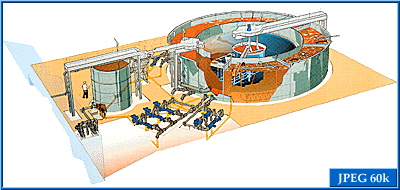 The Urban wastewater Treatment Directive has highlighted
the need for the control of nutrients in sewage effluents
discharging to sensitive areas. This control is required
to reduce potential problems of eutrophication in fresh
water lakes and rivers as well as coastal and estuarine
areas. Within the Korea, TEI(TAEJIN ENGINEERING, INC)has
the most sewage treatment works requiring nutrient
removal and so we have taken action to investigate the
implications of both Community policy and increased
environmental awareness over the removal of nutrients
from sewage works discharges.
The Urban wastewater Treatment Directive has highlighted
the need for the control of nutrients in sewage effluents
discharging to sensitive areas. This control is required
to reduce potential problems of eutrophication in fresh
water lakes and rivers as well as coastal and estuarine
areas. Within the Korea, TEI(TAEJIN ENGINEERING, INC)has
the most sewage treatment works requiring nutrient
removal and so we have taken action to investigate the
implications of both Community policy and increased
environmental awareness over the removal of nutrients
from sewage works discharges.

